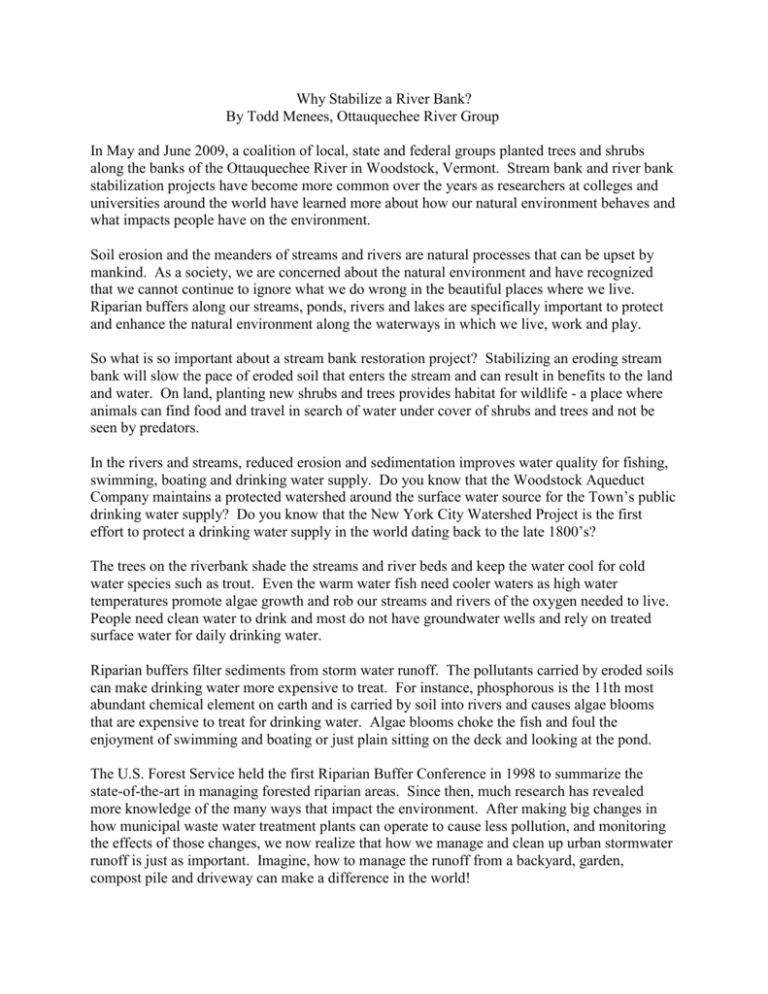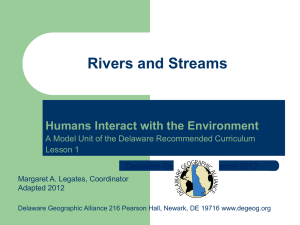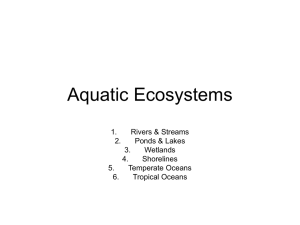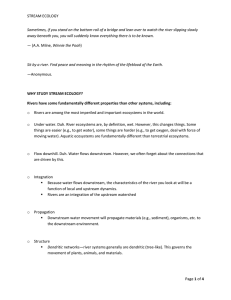Why Stabilize a River Bank
advertisement

Why Stabilize a River Bank? By Todd Menees, Ottauquechee River Group In May and June 2009, a coalition of local, state and federal groups planted trees and shrubs along the banks of the Ottauquechee River in Woodstock, Vermont. Stream bank and river bank stabilization projects have become more common over the years as researchers at colleges and universities around the world have learned more about how our natural environment behaves and what impacts people have on the environment. Soil erosion and the meanders of streams and rivers are natural processes that can be upset by mankind. As a society, we are concerned about the natural environment and have recognized that we cannot continue to ignore what we do wrong in the beautiful places where we live. Riparian buffers along our streams, ponds, rivers and lakes are specifically important to protect and enhance the natural environment along the waterways in which we live, work and play. So what is so important about a stream bank restoration project? Stabilizing an eroding stream bank will slow the pace of eroded soil that enters the stream and can result in benefits to the land and water. On land, planting new shrubs and trees provides habitat for wildlife - a place where animals can find food and travel in search of water under cover of shrubs and trees and not be seen by predators. In the rivers and streams, reduced erosion and sedimentation improves water quality for fishing, swimming, boating and drinking water supply. Do you know that the Woodstock Aqueduct Company maintains a protected watershed around the surface water source for the Town’s public drinking water supply? Do you know that the New York City Watershed Project is the first effort to protect a drinking water supply in the world dating back to the late 1800’s? The trees on the riverbank shade the streams and river beds and keep the water cool for cold water species such as trout. Even the warm water fish need cooler waters as high water temperatures promote algae growth and rob our streams and rivers of the oxygen needed to live. People need clean water to drink and most do not have groundwater wells and rely on treated surface water for daily drinking water. Riparian buffers filter sediments from storm water runoff. The pollutants carried by eroded soils can make drinking water more expensive to treat. For instance, phosphorous is the 11th most abundant chemical element on earth and is carried by soil into rivers and causes algae blooms that are expensive to treat for drinking water. Algae blooms choke the fish and foul the enjoyment of swimming and boating or just plain sitting on the deck and looking at the pond. The U.S. Forest Service held the first Riparian Buffer Conference in 1998 to summarize the state-of-the-art in managing forested riparian areas. Since then, much research has revealed more knowledge of the many ways that impact the environment. After making big changes in how municipal waste water treatment plants can operate to cause less pollution, and monitoring the effects of those changes, we now realize that how we manage and clean up urban stormwater runoff is just as important. Imagine, how to manage the runoff from a backyard, garden, compost pile and driveway can make a difference in the world!











